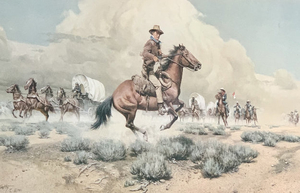Chinese Art & Western Art, Which Should You Prefer & Why?
- Posted on 11th November 2021
- in Asian Art Buyers
- by Antique Art Buyers
Chinese art and Western art both represent two ancient and transformative traditions in art. Both are an important key to gaining insight into their respective cultures. They each represent powerful and beautiful aesthetics that are quite different from each other. Most antique art buyers have a strong preference for one or the other. Others deal in both. What about you? Which should you prefer, as you look at the art world and consider artwork to invest in or simply to enjoy and study? Chinese art or Western art? In this article, we are going to take a look at the two artistic traditions and consider where they come from and what their value is. Our goal is to help you determine which one you should prefer.
How do Chinese art and Western art differ?
The traditions of Chinese art and Western art have some important differences at their core. One of the most important philosophical differences between the two traditions involves how the artist depicts reality. Chinese art tends to be centered more on the artist using imagination to create a depiction that shows inner life. Western art has a long tradition of the artist striving for technical mastery to create the most realistic depiction of their subject. This is shown in the work of artists like Vermeer, which has an almost photographic quality. In fact, Chinese art tends to be focused on telling a story and not on visual acuity. It is more two dimensional. Western art tends to include wide spaces and a depth of field. It is more three dimensional. Antique art buyers recognize this difference and appreciate how it creates artwork with divergent styles.

Chinese Art

Western art
Color is another important way in which the traditions of Chinese art and Western art differ. Color has played a significant role in Western art. It often has a religious/symbolic meaning. Western artists have traditionally used a broad palette of colors. On the other hand, Chinese artists have worked mainly in black and white. When it is there, it is often faint. It doesn’t have the same importance in Chinese art as it does in Western art. With such broad differences between Chinese art and Western art, your own preference will most likely go in one direction or the other.
Which has greater value, Chinese art or Western art?
The aesthetic value of the two artistic traditions is one thing, but how about the monetary value of Chinese art vs. Western art? If you are collecting based on monetary value, which is to be preferred? These days, there is actually quite a bit of cross-investment going on. Chinese art dealers have money to invest in art. Driven by the rise of the ultra-wealthy in China and Hong Kong, there is more interest in western art than ever before in China. Likewise, there is also a rising interest in Chinese art among collectors in the West. There has always traditionally been great demand for great works of Western art, and investors have found it to be a lucrative investment. They have spent millions at auction for some famous pieces. Increasingly, there is a demand for Chinese art with record-breaking prices at auction, with prices going into the millions in some cases.
What is the bottom line? There is no specific reason why you favor Chinese art or Western art. They are both transcendent expressions of human creativity and beauty. They are both incredibly significant to their own cultures. In today’s global society, both have a role to play in the discourse about art. Your own taste will dictate which one you prefer. They are also both financially valuable and can command impressive sums at auction. At Antique Art Buyers, our knowledgeable experts can help you with appraising, buying, or selling both Chinese and Western art. Contact us today to get started!
Tags: antique art, Antique art buyers, art buyers, chinese art, western art



